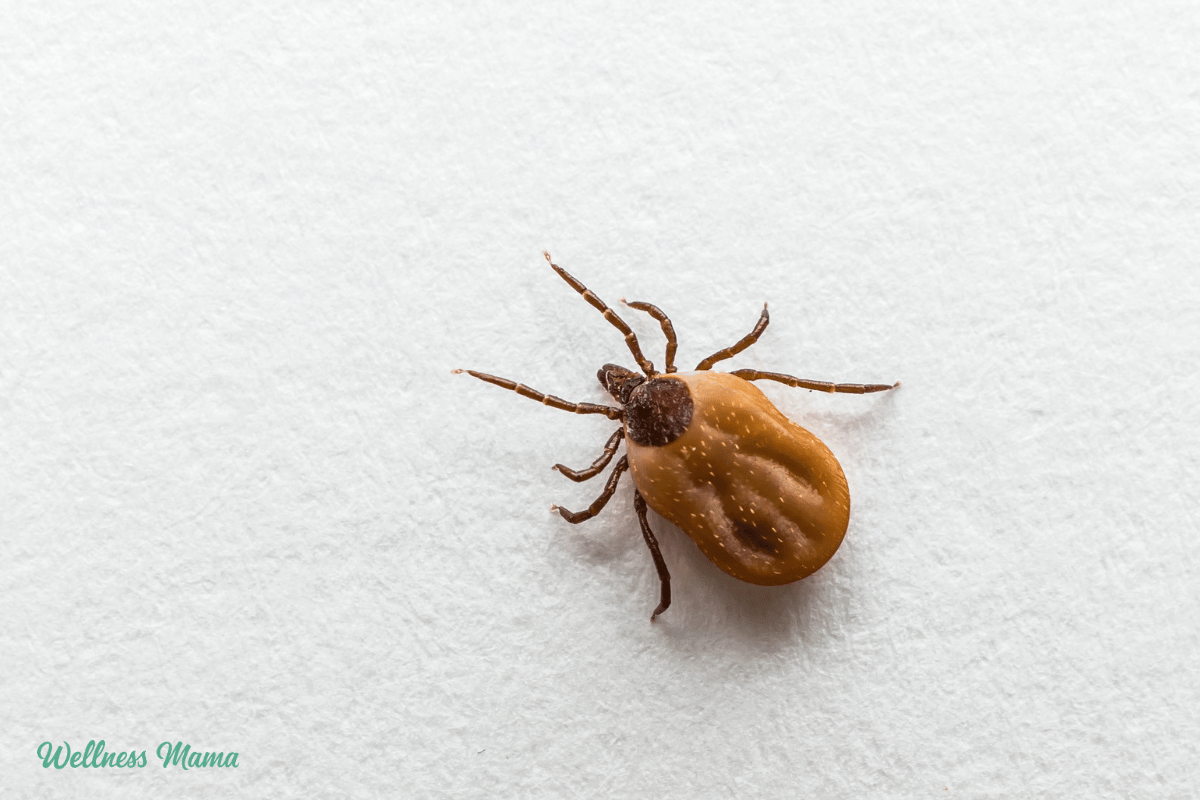As spring and summer draw near and we spend more time outdoors, there’s an increased risk of encountering ticks. Ticks are not only insects that sting (they don’t actually bite), but they are also well-known carriers of diseases such as Lyme disease and Rocky Mountain spotted fever.
It is essential to know how to prevent tick bites to ensure safety during outdoor activities. Here are some tips to help you avoid tick bites and make the most of your time outdoors without worry.
Are Tick Bites Dangerous?
Yes, indeed they can be! Many are familiar with the seriousness of Lyme disease, now more frequent than breast cancer, predominantly spread by black-legged ticks. Lyme disease is caused by the spiral-shaped bacteria Borrelia burgdorferi.
Apart from Lyme, there are other tick-borne diseases such as spotted fever rickettsiosis (which includes Rocky Mountain spotted fever), anaplasmosis, and babesiosis. Others include ehrlichiosis, Colorado tick fever, and tularemia. You could also contract tick-borne encephalitis, which results in brain inflammation.
Such infections often present similar symptoms to Lyme disease. Despite being less common than Lyme, they still account for thousands of tick-related illnesses in the U.S. annually.
Lyme disease manifests in various symptoms such as persistent fever, headaches, and rashes. Severe cases include chronic joint pain and swelling, misdiagnosed as something else, or allergic reactions to the bacteria. Some individuals may suffer from serious neurological disorders.
Diagnosing Lyme disease is particularly challenging. Dr. Jay Davidson discusses this issue further in his podcast.
Where Are Ticks a Problem?
Tick-borne diseases frequently occur in the northeastern U.S., but the CDC reports Lyme disease cases in every state. You can view a map of reported cases by the CDC from 1990 to 2021.
Rhode Island, Vermont, and Maine report the highest rates of Lyme disease, with about 200 cases per 100,000 people in 2022. The Midwest is also seeing more cases in recent years.
However, Lyme isn’t just restricted to the Northeast and Midwest. By 2015, almost half of all U.S. counties reported the presence of black-legged ticks. The CDC continues to track this growing trend.
As Lyme disease spreads to more states, it’s advisable to take action to lower the likelihood of tick bites. Ticks are most active in spring and summer as they hatch and look for their next meal.
How to Check for Ticks
Engorged ticks are simple to detect, but they can be as small as a pinhead and like warm, moist areas on the body.
To start, shower to remove any ticks that aren’t attached. Then, inspect your hair and the back of your neck with your fingers. Other common tick hiding spots include:
- Behind arms
- Behind the knees
- In or around the ears
- Belly button
- Between the legs
- Around the waist
For tick identification, refer to this useful chart with images that help sort ticks by region, type, life stage, and what diseases they may transmit. While the deer tick is most problematic, it’s not the only one to watch for.
What to Do If You Find a Tick
Finding a tick on my child’s head was an unforgettable moment. I wasn’t calm, nor did I know exactly what to do.
With more experience, I’m better at handling ticks. If you’re a parent or have pets, you’ve likely encountered this, but if not, here’s what you should do:
Check to see if the tick is attached. A small, flat tick on your clothes, skin, or floor likely hasn’t fed. A large tick with a swollen body, however, could be more concerning as it may have already fed on something in your home.
If unattached, don’t try to kill it. Restrain the urge to crush, burn, or destroy it. Instead, use tweezers or tape to pick it up and place it in a sealed bag or jar in the freezer to kill and preserve the tick for identification.
If attached, here’s what to do (and not to do):
How NOT to Remove a Tick
Many home remedies for tick removal might worsen the situation. Applying heat, essential oils, or petroleum jelly can irritate ticks, causing them to regurgitate pathogens into your skin.
Previously, using fine-tipped tweezers to pull ticks straight out was advised, but this can leave parts embedded in the skin.
What to Do Instead: Safe Tick Removal
A tick-removal device like this spork-shaped tool is preferred. Insert it between the tick and skin, gently twist until the tick releases. It’s more effective than tweezers and reduces the chances of leaving parts behind.
Without a tick remover, use tweezers close to the tick’s mouth.
How to Remove a Tick
- Try to stay calm.
- Approach the tick sideways with a removal tool or tweezers.
- Slide the tool under the tick’s head and skin. With tweezers, grasp close to the head.
- Twist with the remover or pull upwards with tweezers until it detaches. Avoid jerking or twisting with tweezers.
- Seal the tick in a bag, note the date, and freeze it for future identification if needed.
- Ensure no tick parts remain in the skin and use tweezers or a drawing salve for removal if needed.
- Clean the area with soap and water, then apply an antimicrobial or essential oils like diluted lavender.
How/Where to Send a Tick for Testing
Testing human tick-borne illnesses can be inaccurate. The ELISA test often used may not detect Lyme, even when other tests do. A Western Blot test might be more accurate with specific interpretation.
Igenex is a reputable lab for Lyme disease screening and also tests for other infections. Vibrant Wellness offers a more budget-friendly option for comprehensive Lyme panels and co-infection detection. These companies allow sending the tick for testing.
Early detection and treatment increase chances of a favorable outcome. Here’s what you should watch for:
Symptoms of Tick-Borne Illness
According to the CDC, symptoms of tick-borne illnesses include:
- Recurring fever and chills (flu-like symptoms)
- Joint or muscle pain
- Headache
- Fatigue
- A round rash looking like a bullseye (erythema migrans)
The bullseye rash isn’t always present, so monitor other symptoms. Children might experience tick paralysis, leading to numbness or tingling. Check the CDC for a comprehensive symptom list.
Dr. Jay Davidson mentions a sore sternum as a potential Lyme disease sign.
If you suspect tick-borne illness, consult a doctor promptly. Dr. Davidson recommends Ledum palustre as a natural remedy or applying andrographis tincture to prevent disease transmission from a fresh bite.
Tick Prevention Is the Best Cure (for Now)
Preventive measures can help avoid ticks and other insect bites. While the battle against ticks isn’t perfect, especially when avoiding chemicals, we hope for more ways to control Lyme in the future.
Here are steps to allow children to explore confidently:
1. Tick-Proof Your Yard
Avoid professional chemical sprays for ticks, as they aren’t safe for kids, pets, or the environment. Opt for these natural steps instead:
-
Keep the grass short. Ticks thrive in tall grass and dense vegetation, so mow regularly and tidy up your yard.
-
Prune dense landscaping. Trim overhanging branches to allow more sunlight. Ticks prefer shaded, humid spots, so introducing sunlight can deter them.
-
Mulch with cedar chips. Studies indicate ticks dislike cedar oil. Consider mulching yard boundaries or areas between your yard and grass with cedar chips.
-
Try adding nematodes. These are natural tick predators safe for other insects, and can be introduced to your garden to manage tick numbers.
-
Consider Tick Tubes: They contain treated cotton that mice collect for their nests, killing ticks on them, lowering human exposure risk.
- Get backyard chickens! Chickens forage naturally for insects, including ticks, helping to keep the population in check.
2. Use Natural Bug Repellent
While low doses of DEET are deemed relatively safe by the EWG, it’s not advised for pregnant women or young children. Possible side effects, including dizziness and headaches, warrant caution.
For tick prevention, I prefer natural repellents. Some essential oils, like citronella, can be as effective as DEET. My homemade bug spray recipe combines oils known for repelling ticks: geranium, citronella, and lemon eucalyptus.
Natural bug spray is particularly beneficial in repelling nymph ticks. Additionally, consuming certain herbs might help. Astragalus, used in Traditional Chinese Medicine, may repel ticks and bolster immunity. Lyme expert Stephen Buhner advises adults to take 1,000 mg of Astragalus daily to deter ticks.
3. Check for Ticks Daily
Though tedious, regular tick checks become a routine. Install a full-length mirror in your bathroom and teach children to inspect themselves and each other. The black-legged tick nymph, about the size of a poppy seed, often carries Lyme disease. This is a complete guide for conduction thorough tick checks, even for kids. Make it a habit before meals, bedtime, and include it in washup routines.
4. Practice Good Hiking Hygiene
Ticks love wooded trails and dense foliage.
But don’t let them stop your outdoor fun. Follow these tips for smarter hiking:
-
Wear protective clothing: Don long sleeves in high-tick areas and tuck pants into socks to prevent them from reaching skin. Light colors make ticks easier to spot.
-
Choose high boots rather than athletic shoes: Keep skin covered.
-
Wear a wide-brimmed hat: This can stop ticks from getting on your neck or hair in tall brush.
-
Consider permethrin clothing: Though not ideal, this synthetic insecticide from chrysanthemums kills ticks on contact and might be worth using in tick-heavy spots.
-
Stay on the trails: Avoid going into brush or tall grass where ticks linger.
-
Do an after-hike tick check: Before getting into your car, check for ticks or use a sticky lint roller on clothes.
-
Head to the laundry room! Put hiking clothes directly into the dryer on a high setting for 10 minutes to kill ticks.
- Finish up with a good soak: Bathe or shower swiftly after hiking, ideally within 2 hours of being inside.
Keep family robes handy in the mudroom to strip off after hikes, toss clothes in the dryer, and then head for showers.
5. Protect Pets
Pets are also prone to tick-borne diseases and are harder to check with all their fur. Thoroughly inspect dogs and cats before letting them back inside. Try a few drops of geranium oil on dog collars, but avoid using essential oils on cats.
Final Thoughts
These steps can lower your risk of tick bites, but regular tick checks remain crucial, especially from May to August. If you find an attached tick, remove it immediately using the right method to decrease the likelihood of disease transmission. If you notice symptoms like rash, fever, or muscle aches, seek medical attention promptly.
Have you experienced a tick bite? What actions did you take? Any additional prevention ideas?

















Leave a Reply